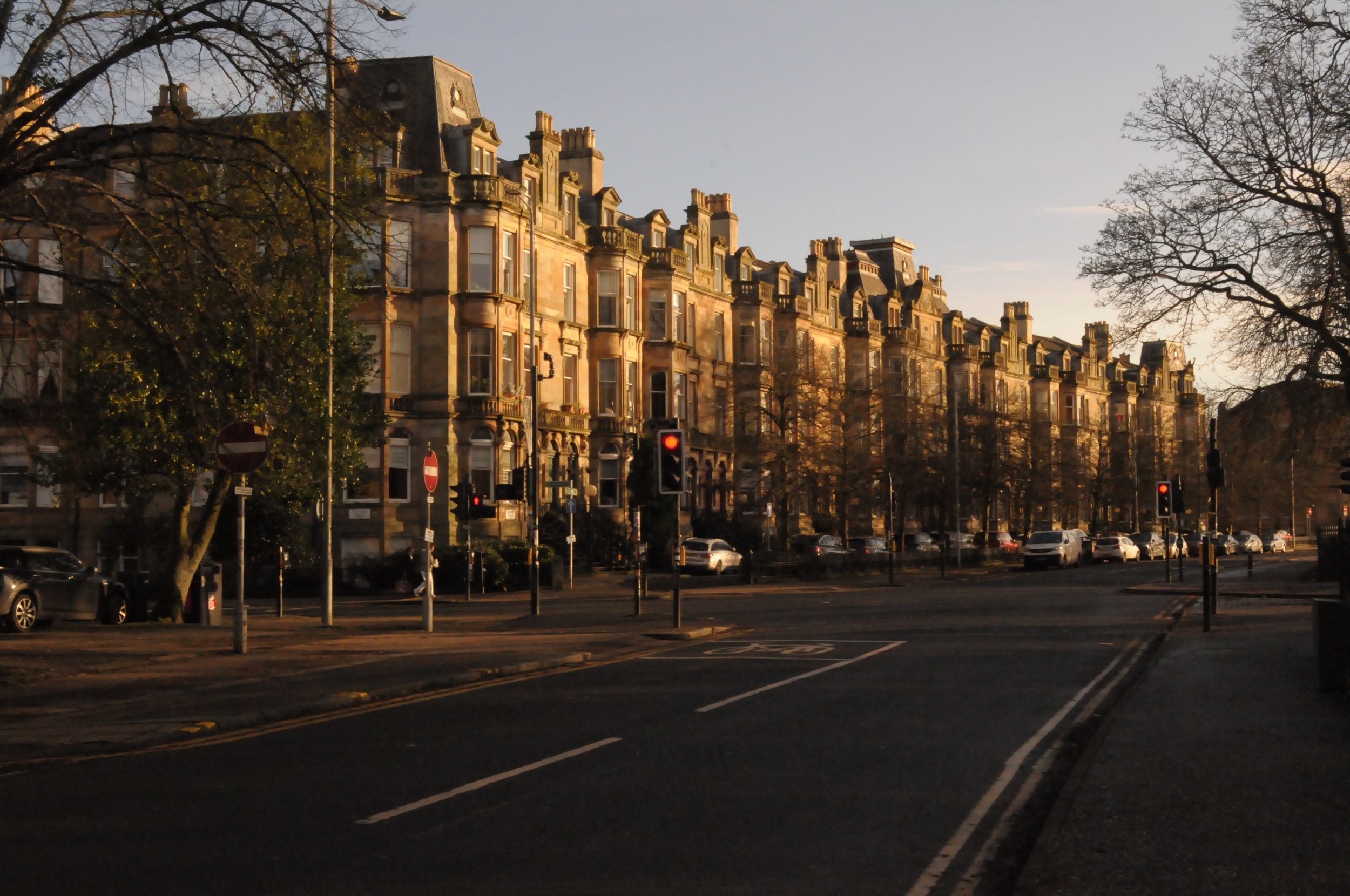Stories from Our Streets: Langside Road
In Stories from our Streets: Langside Road, local historian Bruce Downie traces the street’s fascinating history — from its origins and the impact of wartime bombings to its architectural landmarks and the architects that built them.
View of Queen’s Park on Langside Road
By Bruce Downie | Photo by John Bowden
Origins & Etymology
Langside Road, named after the historic village of Langside (meaning the long hill or long field), was once much longer than it is now.
In 1888, a writer, known by the pen name Dulsie, wrote in the Glasgow Herald about a journey undertaken forty years previously from the Gorbals to Langside.
Dulsie left Glasgow via the Gorbals. Heading south on Pollokshaws Road, the road he was on branched off to the east onto what was sometimes known as the Mid-Road or Langside Road – part of which would later become known as Old Langside Road.
This road continued south and east towards the small village of Butterbiggins. Old Langside Road existed until 1929 but was built over when the Larkfield Omnibus Depot opened.
Fruitful Developments
South of Butterbiggins, the traveller emerged onto the northern part of what we consider Langside Road today, but was then occupied by the Coplawhill Nursery, a significant estate.
Langside Road sign beside resident’s window decorated with Scottish saltire sticker
Coplawhill Nursery primarily grew fruits and vegetables and was renowned for developing a unique variety of the Double Scotch Rose called the Mary Queen of Scots. The nursery occupied this site from 1828 until 1862.
South of the nursery, the land surrounding Langside Road became an industrial area known as Allanton Park. Langside Road weaved a path through this area. There were several small coal-pits and mine workings on both sides of the road.
Dulsie described the road beyond the coal-pits, in what is now technically Crosshill, as ‘covered in dross and full of water holes, turnings and windings, sharp angles, down and uphill in the most diversified fashion’.
Before 1859, and before turning Pathhead Farm into Queen’s Park, Queen’s Drive did not exist and Langside Road did not sweep around the hill as it does today. The Langside Road we know today only took shape in 1862, after the opening of Queen’s Park. Existing roads leading to the new park were upgraded and new infrastructure was built, opening up the area to new housing and development.
Queen’s Drive today
Bombs and Buildings
One of the most notable buildings to have existed on Langside Road was the Queen’s Park United Presbyterian Church, completed in 1869 and designed by famous Scottish architect Alexander ‘Greek’ Thomson. This spectacular building stood until 1943, when it was hit by a German bomb.
Plaque honouring Alexander “Greek” Thomson
The main entrance to the Govanhill Library is on Langside Road. The library opened in 1906 and was designed by James Rhind, who designed many district libraries in Glasgow. Steel magnate and philanthropist, Andrew Carnegie, donated money for its construction.
Silhouette of Govanhill Library’s roof
Another distinctive building still stands on the southern corner of Langside Road and Queen Mary Avenue. This was the Marie Stuart Hall, owned and managed by the local Masonic Lodge, and built in 1877. The faintest trace of the signage for the hall can still be seen above the second-floor windows facing Langside Road.
Your Memories of Langside Road
Isobel Bradley Boyce recalls a family story of the bombing of the church: “My parents lived at 179 Langside Road, they stayed one floor above my uncle and grandmother. The story goes that my gran came home from Darvel after being evacuated from Govan – with my dad and his wee brother – the night the church was bombed! My uncle, who was 16, had to go up on the tenement roof beside the church to remove the incendiary bombs which fell during the raid.”
Pauline Farquhar remembers the circus coming to town: “I lived at 346 Langside Road and I could watch the circus procession passing the top of the road when they came to town. As a seven-year-old it seemed very exotic; cows, elephants and llamas were paraded up the road. Then, to me and my wee sister's delight, the ring master on stilts came down the road waving up to us… then bent double and went into the Albert bar for a drink. This shattered my illusion of him being a magical creature.”




